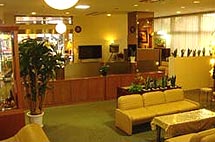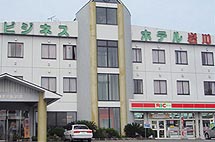


Singapore, January 16, 2012
If Singaporeans can't go to Kagoshima, Kagoshima will come to Singapore.
The latest in a series of longstanding cultural exchanges between Singapore and Kagoshima prefecture takes place here, starting this weekend with a month-long food promotion at various venues and featuring products from the Kagoshima region.
From Jan 14 to Feb 13, Japanese restaurants Chikuyotei at the Intercontinental Hotel and Akane at the Japanese Association will feature products such as Wagyu beef, Kurobuta pork and fresh fish from the seas off Kagoshima on their menus.
Nadaman at the Shangri-La Hotel will have the products from this weekend until the end of January.
From Jan 16 until mid-February, Chef Justin Quek at Sky on 57 at Marina Bay Sands will find new and interesting ways to serve Sakurajima daikon and other selected products.
On the supermarket front, Kagoshima produce will be available at Isetan Scotts from Jan 16 to 18, and at 10 Cold Storage outlets (including Paragon) from Jan 18 to 21. Finally, on Feb 12 at noon at Akane, there will be a lecture, demonstration and tasting session on food from Kagoshima.
For more information, call .
Kagoshima, with its balmy climate and abundance of quality ingredients, is still surprisingly an under-the-radar destination for Singaporeans when they make their travel plans.
Given our near-religious devotion to the culinary arts and the vast hordes of Singaporeans who travel to Japan on restaurant pilgrimages and food discovery trips each year, it's a little surprising that Kagoshima - a city at the southern tip of the island of Kyushu that's a 90-minute ride on the bullet train from Fukuoka or about a two-hour flight from Tokyo - is still an undiscovered destination among the will-travel-for-food fraternity.
With its pleasant subtropical climate - palm trees and ocean breezes are in abundance - easy access to nearby attractions such as the natural steam black sand baths at Ibusuki, and postcard-perfect views of the active volcano Mt Sakurajima in the bay just beyond the city, Kagoshima (with a population of 600,000) is no slouch when it comes to tourism.
Kagoshima has had cultural links to Singapore for 30 years, but Singaporeans account for less than 2 per cent of the total number of visitors to Kagoshima, according to statistics provided by the tourism division of the Kagoshima Prefectural Government.
Just 670 hotel room nights were registered to Singaporeans in the first six months of 2011, significantly down from the 2,860 nights for all of 2010.
While the decline in visitor arrivals can be attributed to the fallout from the earthquake disaster in northern Japan in March 2011, it's safe to say that Kagoshima qualifies as an under-the-radar destination for Singaporeans when they make their travel plans.
It's the same story with food from this region of Japan - and more specifically the high-quality ingredients that are essential to any great dish, whether it's a simple bowl of ramen or a more formal multi-course kaiseki meal.
Kagoshima and its environs may be seriously undersold when compared to other parts of the country but while it does not have Michelin-starred restaurants or much in the way of international resorts there is still plenty on offer, especially when it comes to raw ingredients.
Some significant inroads are being made, however. For instance, Wagyu beef from Kagoshima prefecture has been available here in recent years, as well as Kurobuta black pork and fish products such as kanpachi (amberjack), Satsuma-age (fish cake) and Satsuma-imo (sweet potato).
The Kagoshima brand, so to speak, is still relatively unknown, but officials are making a concerted effort to raise awareness abroad, starting with a Kagoshima food promotion in Singapore next week.
The mountainous region of Kirishima, to the north-east of Kagoshima city, is home to Japan's first national park, numerous hot springs - and some of the most pampered pigs in the country. Kurobuta pork originated from here about 400 years ago and now, about 150 farms in the region continue the tradition.
The Kirishima Highland Royal Pork Company has been in business for four decades, but CEO Taira Kuninori says that until about 25 years ago, no one in the prefecture liked to eat Kurobuta pork - the meat was sent to Tokyo, Osaka and other premium domestic markets. Currently, the only export markets are Singapore and Hongkong.
At his farm in a wooded location in the hills, a species of black Berkshire pig (originally cross-bred from Chinese and UK pigs) is bred with tender loving care.
The animals are fed sweet potatoes and spring water and listen to traditional Japanese music in their stalls while the sows, whose offspring are reared for 245 days until they weigh around 110 kgs, get an additional treat of delicious tea leaves - membership to the local golf club can't be far behind.
Even then, the meat, which is prized (and priced at about S$25 per kg) for its extremely tender quality, has to pass a visual inspection before it qualifies as Kurobuta - about 35 per cent doesn't make the grade and is destined to suffer the ignominy of becoming processed meat.
Meanwhile, Kuninori-san plays his part in the farm-to-table movement by owning a nearby restaurant where he is also the chef and where the specialty is (surprise, surprise) Kurobuta pork served a dozen or more ways, including shabu-shabu, a pork meatball, an all-pork burger and tonkatsu-style, featuring deep-fried breaded pork loin.
One of the house specialties is the Kurobuta Doughnut - a deep-fried mochi (glutinous rice) ball filled with pork, black sesame and local kurozu (black vinegar) from Fukuyama, a coastal town that is famous for being home to a traditional vinegar-making process that dates back to the Edo period.
Here, black vinegar - made using water from an underground reservoir, unpolished rice and a special strain of yeast - is serious business. It comes in concentrated form and is typically consumed as a drink.
With its proven health qualities, the vinegar, which is stored outdoors in large clay jars for at least three years (and up to nine years), is a popular product among domestic tourists who visit the well-appointed premises of the Fukuyama Black Vinegar Company to eat at the specialty restaurant (everything from sushi rice to salad dressing to the banana yogurt dessert is made with kurozu) and stock up on their supplies of the stuff.
In one of nature's twists, the soil and climate conditions suitable for growing a variety of citrus fruits, including Sakurajima oranges, the smallest oranges in the world, are also conducive for growing the Sakurajima daikon, a giant white radish that can weigh up to 25 kgs and is traditionally used for making pickles. A single daikon whopper can yield enough pickles to feed 200 people.
In 2003, in a feat that got him an entry in the Guinness Book of World Records, local farmer Manabu Oono landed The Big One - a daikon weighing 31.1kgs.
"It was a whale," says Mr Oono, 68, with the pride of a father talking about a favourite child. When I first picked it up I had to release it right away. They have pure white skin and are beautiful to look at - they don't change in taste, only in size."
No matter where you happen to be in Kagoshima, chances are you will be within viewing distance of Mt Sakurajima, which is both a boon to the economy and the bane of local residents who - depending on wind direction - risk being showered with silver-grey volcanic ash on a daily basis.
The Castle Park Hotel has a prime location on a hillside overlooking the city and from its open-air baths guests will have a ringside seat to the volcanic show as well as views of nearby Shiroyama forest.
In the city's Tenmonkan entertainment and nightlife district, shops, bars and restaurants serving Kurobuta and shochu (the distilled spirit made from sweet potato that is the de rigueur choice in these parts) abound. For a taste of tradition though, head to somewhere like Noboruya, a ramen shop on a quiet side street, where it has been in business for 65 years.
Like any of the unique products from Kagoshima, it will be a culinary experience to savour.


















































































